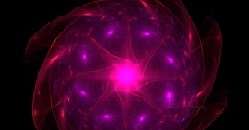A quantum leap for the next generation of superconductors

Quantum materials – materials designed at the sub-atomic level – can be finely-tuned to achieve extremely useful properties that are often not found in nature. These include superconductivity, the ability to conduct electricity without resistance below a certain temperature.
An ambitious six-year EU-funded project, Q-MAC (Frontiers in Quantum Materials Control) was only launched in 2013, but has already achieved a number of potentially significant breakthroughs in this field. These findings could significantly advance European understanding of superconductivity and help to pioneer new industrial applications ranging from supercomputers to hover trains.
Superconductors at higher temperatures
For example, the team has shown that shining lasers at superconductors can make them work at higher temperatures. This is significant because superconductors currently only work at very low temperatures, which requires expensive liquid nitrogen or helium.
Superconductors are used in numerous high tech instruments such as medical scanners, super-fast electronic computer circuits and trains that use superconducting magnets to hover above the tracks, thus eliminating friction. The development of superconductors that work at higher temperatures – or even at room temperature – could help to cut costs by eliminating the need for cooling and lead to new applications.
Having focused on material made from potassium atoms and carbon atoms arranged in ball-like structures, the Q-MAC project team will now try to find other superconductors that can be coerced to work at even higher temperatures. The researchers are also looking to engineer new meta-materials – materials that are not found in nature – that offer optimised superconductivity.
High-temperature superconductors for practical applications
Another key objective is to ensure the stability of high-temperature superconductors that can be exploited for practical applications. This is not straight forward; high-temperature superconductivity is a delicate property that is difficult to maintain for prolonged periods of time.
The challenge therefore is to prevent heat or other environmental factors from disturbing the system. In order to address this, the project team is currently looking into the possibility of 'sandwiching' the superconducting system between protective layers of specially engineered materials, which would 'screen out' disturbances. Novel experimental techniques, combined with advanced computer simulations, will be carried out.
The Q-MAC project team has also discovered that extremely short X-ray pulses can be used to achieve vibrations in crystals, trigger a change in the magnetic properties of an atomically-thin layer that lies on its surface. This anatomically-thin oxide film has properties very different from its bulk form.
This makes complex oxide structures a versatile tool for engineering materials and devices properties. Such ultrafast light control meta-materials could lead to new prospects in magnetic storage technologies.
In addition to the practical side of things, the Q-MAC project is also focusing on developing an accurate theoretical understanding of the behaviour of atoms and electrons in quantum materials. The Q-MAC project is scheduled to run until September 2019.
More information: the Q-MAC project website: www.q-mac.eu/
Provided by CORDIS



















